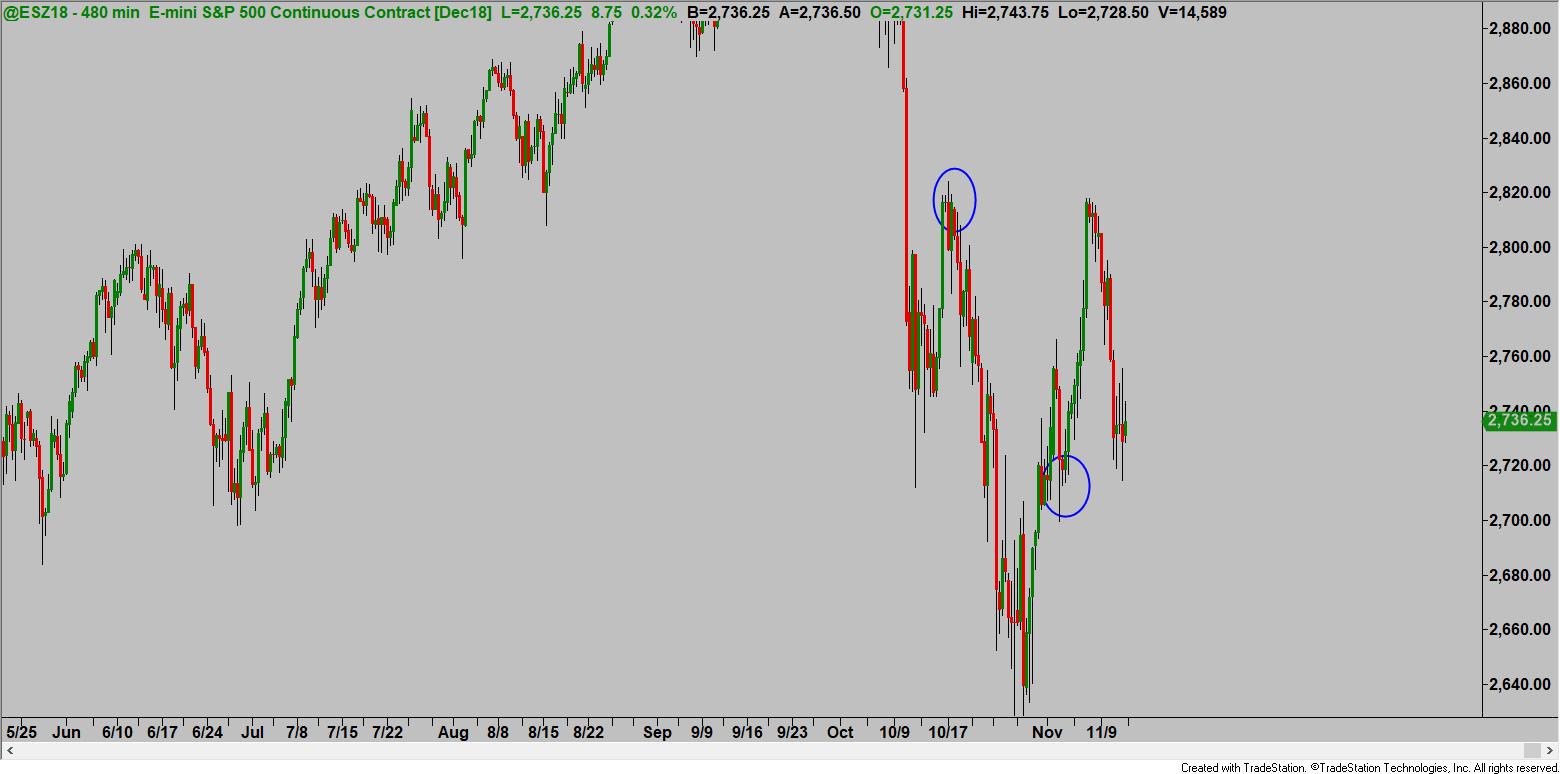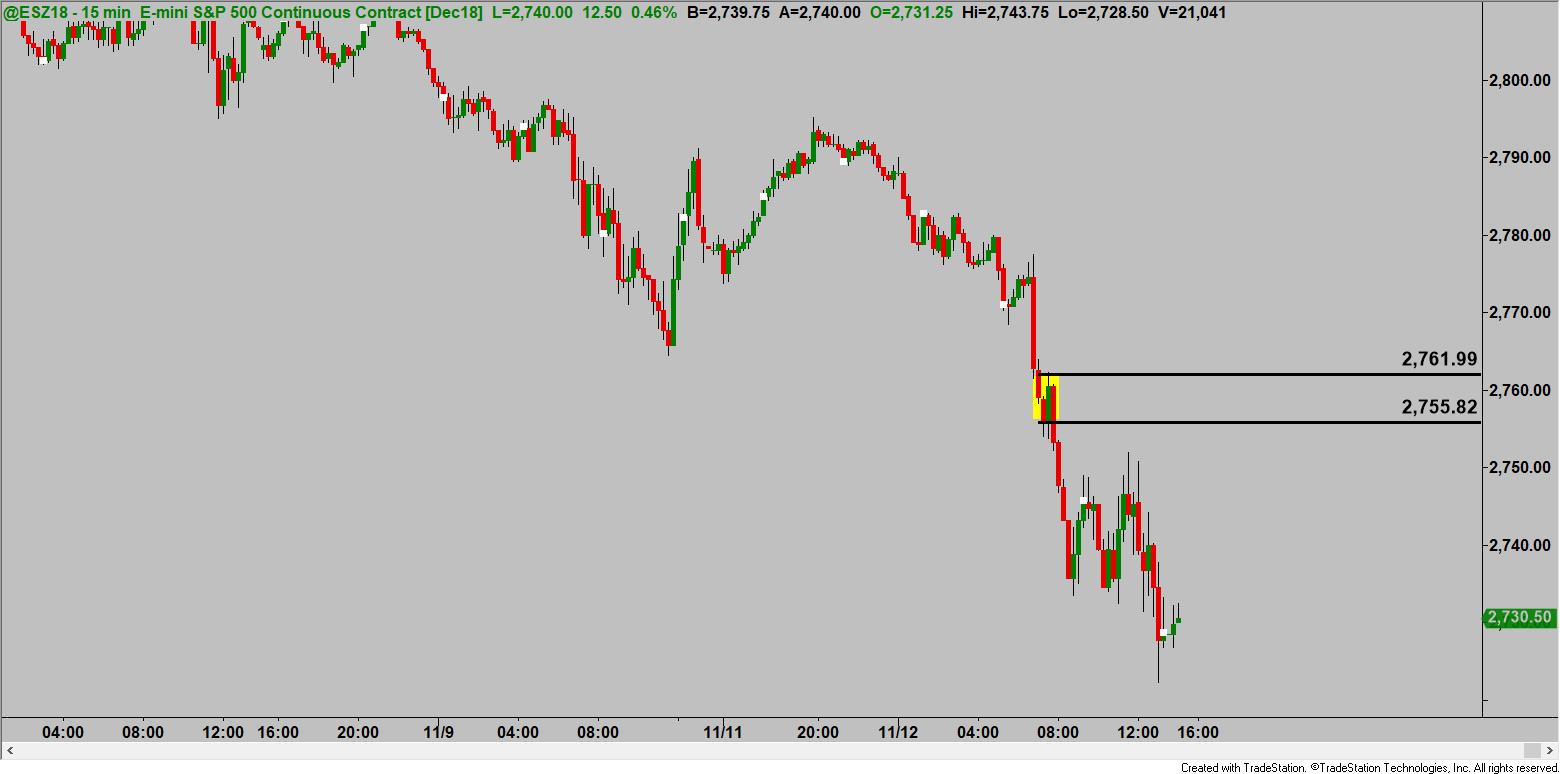Of all the facets of trading, the first that a new trader must learn to master before he can engage the markets with any degree of confidence is the identification of low risk entries on a price chart. Notice that not just any entry will do, only those offering the biggest reward for the least amount of loss potential will do. In addition, the probabilities have to stack up in a trader’s favor.
If you’ve ever read about or had the chance to meet a successful trader, you will find one common thread: They all (without exception) have an EDGE based on low risk entries and possess extreme discipline to execute their process.
What Defines a Low Risk Trade Entry?
I define a low risk trade entry as a price level where a trader can expose the least amount of capital to prove whether his edge will work. I tell students to look for these areas by identifying pockets of unfilled orders. These are generally found at prior inflection points or levels of equilibrium on a price chart. That is, points where is the market likely to change direction.
Specifically, inflection points can be spotted by looking for those price levels where there was a clear change of direction. In other words, where was the dominance of either the buyers or sellers relinquished? Moreover, the more powerful the reversal, the more important that point becomes on the retest. The chart below depicts a couple of these turning points in ES (S&P 500 E-mini futures).
Also noteworthy is the fact that the first time these levels were tested, not only did they provide a low risk trade setup, but they also held and reversed a high percentage of the time.
Also, when a move is underway, those aforementioned pockets of unfilled orders show up on a chart as a level of equilibrium, as we can see from the caption below.
As we can see in the chart, the level stopped the incipient rally and turned price lower. This caused the short trade to work nicely.
In the final two illustrations, I’m showing the before and after screenshot of a trade I set up for the students in the last Instructor Spotlight session I did early Tuesday, November 13. The rationale behind this trade was that the ES had been dropping (as seen by the big red candles shown in the prior chart) and inside the selling candles was a fresh supply zone. The trade was to wait for price to rally up to the Supply zone and expect it turn back down to an opposing demand zone (fresh buy orders).
Suffice it to say, not all trades will work as well as these did, but the key here is when they don’t pan out, the losses will be small compared to the profit potential.
Once a trader learns the skill of identifying these levels, the biggest challenge is putting on the trades. Why do I say this? Well, all of these trades are being placed when price is either retracing or the market is moving strongly into one of these areas.
If you look closely at all the charts, you were shorting into a series of green candles (some of them very tall); psychologically, this doesn’t sit well with most non-professional traders. Only by knowing probabilities and accepting risk can a trader place these trades with self-assurance.
The other issue is patience. These setups don’t come every minute, or five minutes for that matter – more like two or three times a day (maybe). Indeed, this style of trading perhaps is not for everyone, but regardless of your method, identifying and executing low risk entries are the hallmark of a consistently profitable trader.
Until next time, I hope everyone has a great trading week.
Read the original article here - A Lesson on Finding Low Risk Trades
This content is intended to provide educational information only. This information should not be construed as individual or customized legal, tax, financial or investment services. As each individual's situation is unique, a qualified professional should be consulted before making legal, tax, financial and investment decisions. The educational information provided in this article does not comprise any course or a part of any course that may be used as an educational credit for any certification purpose and will not prepare any User to be accredited for any licenses in any industry and will not prepare any User to get a job. Reproduced by permission from OTAcademy.com click here for Terms of Use: https://www.otacademy.com/about/terms
Editors’ Picks
EUR/USD climbs to 10-day highs above 1.0700

EUR/USD gained traction and rose to its highest level in over a week above 1.0700 in the American session on Tuesday. The renewed US Dollar weakness following the disappointing PMI data helps the pair stretch higher.
GBP/USD extends recovery beyond 1.2400 on broad USD weakness

GBP/USD gathered bullish momentum and extended its daily rebound toward 1.2450 in the second half of the day. The US Dollar came under heavy selling pressure after weaker-than-forecast PMI data and fueled the pair's rally.
Gold rebounds to $2,320 as US yields turn south

Gold reversed its direction and rose to the $2,320 area, erasing a large portion of its daily losses in the process. The benchmark 10-year US Treasury bond yield stays in the red below 4.6% following the weak US PMI data and supports XAU/USD.
Here’s why Ondo price hit new ATH amid bearish market outlook Premium

Ondo price shows no signs of slowing down after setting up an all-time high (ATH) at $1.05 on March 31. This development is likely to be followed by a correction and ATH but not necessarily in that order.
Germany’s economic come back

Germany is the sick man of Europe no more. Thanks to its service sector, it now appears that it will exit recession, and the economic future could be bright. The PMI data for April surprised on the upside for Germany, led by the service sector.
RECOMMENDED LESSONS
Making money in forex is easy if you know how the bankers trade!
Discover how to make money in forex is easy if you know how the bankers trade!
5 Forex News Events You Need To Know
In the fast moving world of currency markets, it is extremely important for new traders to know the list of important forex news...
Top 10 Chart Patterns Every Trader Should Know
Chart patterns are one of the most effective trading tools for a trader. They are pure price-action, and form on the basis of underlying buying and...
7 Ways to Avoid Forex Scams
The forex industry is recently seeing more and more scams. Here are 7 ways to avoid losing your money in such scams: Forex scams are becoming frequent. Michael Greenberg reports on luxurious expenses, including a submarine bought from the money taken from forex traders. Here’s another report of a forex fraud. So, how can we avoid falling in such forex scams?
What Are the 10 Fatal Mistakes Traders Make
Trading is exciting. Trading is hard. Trading is extremely hard. Some say that it takes more than 10,000 hours to master. Others believe that trading is the way to quick riches. They might be both wrong. What is important to know that no matter how experienced you are, mistakes will be part of the trading process.




